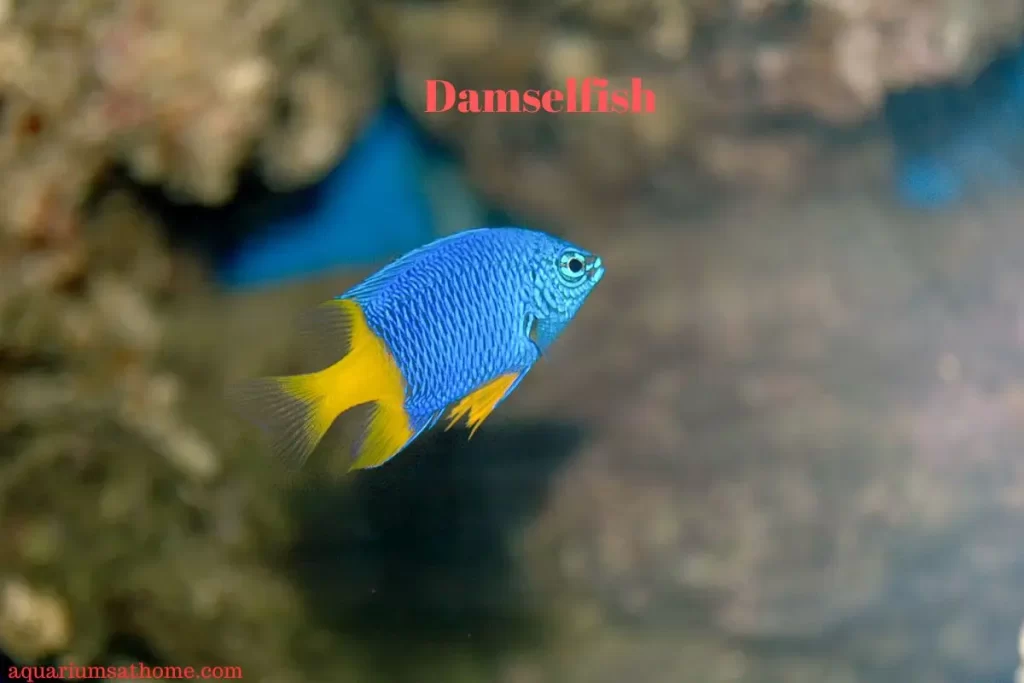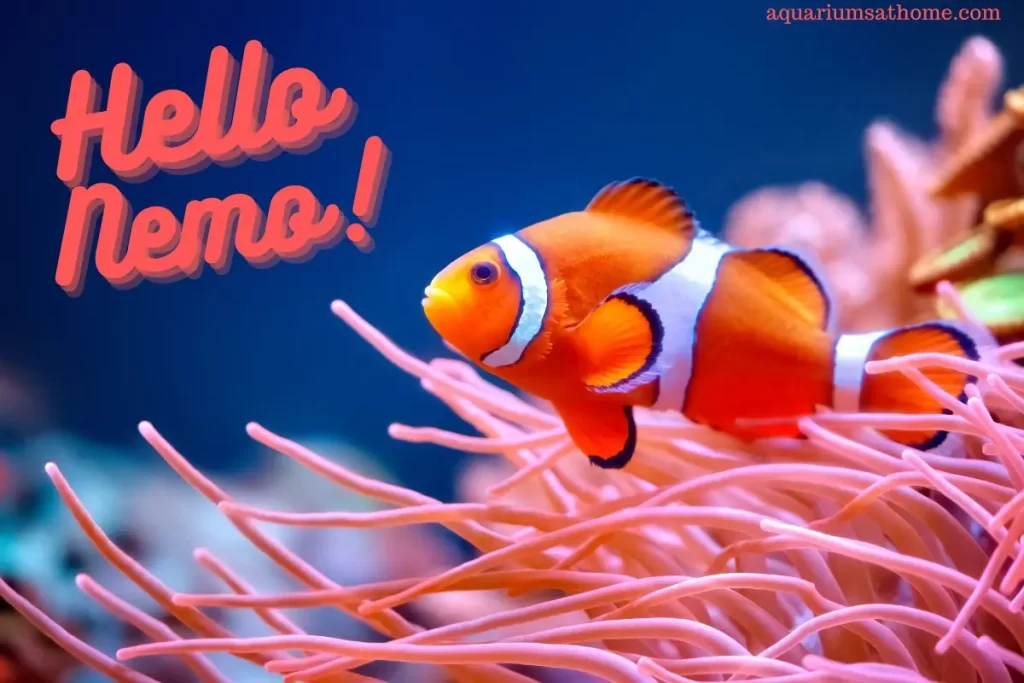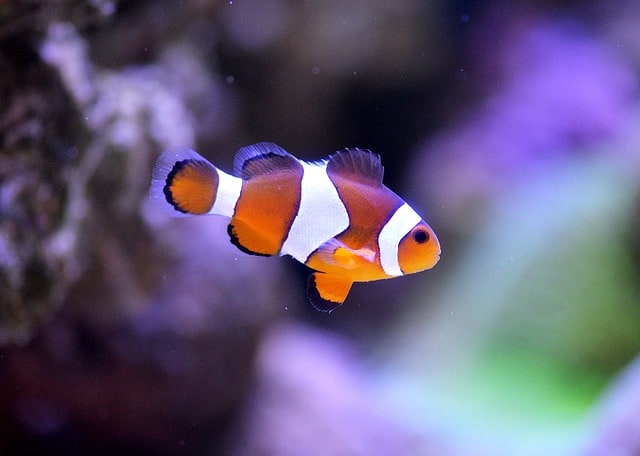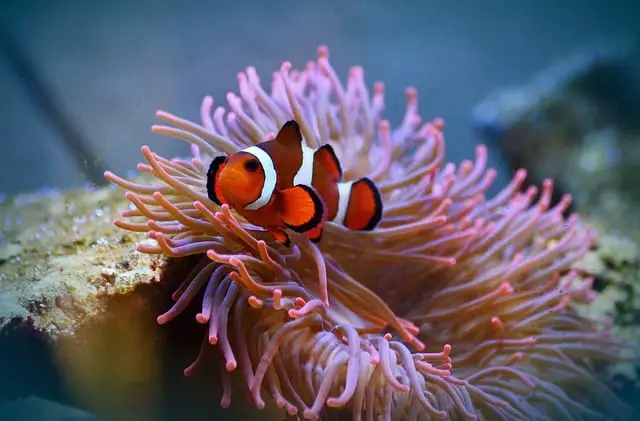Saltwater fishkeeping has seen a surge in popularity, allowing enthusiasts to bring the mesmerizing allure of the ocean into the confines of their homes. If you’re contemplating the creation of a 20-gallon saltwater tank, it is crucial to meticulously select fish species that thrive within this more restricted space. Join us as we delve into a myriad of options, guiding you in crafting a spectacular underwater haven right in your living room.
Delving Deeper: Factors to Consider
Embarking on a saltwater fishkeeping journey requires a nuanced understanding of the factors significantly influencing the well-being of aquatic life in a confined space. Consideration of water parameters, compatibility with other fish, and strategic space utilization in a smaller tank are paramount.
When it comes to water parameters, factors such as salinity, temperature, and pH levels play a crucial role. Different fish species have specific requirements, and maintaining an optimal environment is key to their health and longevity. Compatibility among tank inhabitants is equally important. Some fish may exhibit aggressive behavior or have specific territorial tendencies, impacting the overall harmony within the tank.
Strategic space utilization involves not just the physical dimensions of the tank but also the inclusion of hiding spots and territories for each fish. This ensures a more natural and stress-free environment, promoting positive interactions among the inhabitants.
Navigating the Seas: Ideal Choices for Beginners
Clownfish
Clownfish are an excellent choice for beginners due to their hardiness and adaptability. They are well-suited for smaller tanks and can thrive in a 20-gallon setup. Their playful nature and vibrant colors make them a delightful addition to any marine aquarium.
Tank Mates: Compatible tank mates for Clownfish include damselfish and gobies. These species share similar environmental preferences and are less likely to compete for territory.
Gobies
Gobies are known for their fascinating behaviors and adapt well to confined spaces. Their smaller size makes them suitable for a 20-gallon tank, and their presence adds an element of curiosity to the aquarium.
Tank Mates: Gobies can coexist harmoniously with blennies and certain species of shrimp. These combinations create a diverse yet manageable community within the limited space.
Damselfish
Damselfish are resilient and adapt quickly to tank life, making them ideal for beginners. Their diverse colors and patterns contribute to the visual appeal of the tank, and their small size suits a 20-gallon setup.
Tank Mates: In a 20-gallon tank, clownfish and firefish can be compatible tank mates for damselfish. Care should be taken to introduce them gradually to prevent territorial conflicts. Damsels can be nippy more often than not. Consider a damsel only tank.

A Symphony of Colors: Vibrant Options for Your Tank
Royal Grammas
Royal Grammas are renowned for their regal appearance and vivid colors, making them a striking addition to a saltwater tank. Their moderate size and peaceful demeanor make them suitable for a 20-gallon setup.
Tank Mates: Pairing royal grammas with firefish and blennies can create a visually appealing and harmonious community. Their non-aggressive nature ensures a peaceful coexistence.
Firefish
Why Firefish? Firefish, with their elongated bodies and vibrant colors, add movement and energy to the tank. Their small size and peaceful temperament make them well-suited for a 20-gallon marine environment.
Tank Mates: Firefish can cohabitate with royal grammas and blennies. These combinations enhance the diversity and visual interest within the confined space.
Blennies
Why Blennies? Blennies are known for their quirky behaviors and unique appearances, contributing to the overall charm of the tank. Their smaller size and calm disposition make them suitable for a 20-gallon tank.
Tank Mates: Blennies can share the tank with royal grammas and firefish. The trio creates a dynamic and visually appealing underwater landscape within the limited space.
Microcosms of the Ocean: Nano Reef Tank Options
Coral Options
Why Coral? In a 20-gallon tank, the inclusion of corals adds depth and intricacy, transforming it into a mini reef. Corals such as zoanthids, mushroom corals, and small polyp stony corals thrive in smaller setups, providing a captivating underwater oasis.
Tank Mates: Invertebrates like hermit crabs and snails complement the coral environment by aiding in algae control. The careful selection of compatible invertebrates ensures a balanced and sustainable ecosystem.

Unveiling Personalities: Each Fish is Unique
Clownfish and Gobies
Why Clownfish and Gobies? Clownfish, with their playful antics, and gobies, with their curious personalities, contribute to the overall charm of the tank. Their unique behaviors create an engaging and lively community within the confined space.
Tank Mates: Pairing clownfish with gobies enhances the diversity of personalities. The addition of damselfish, known for their resilience, completes a community with distinct individual traits.
The Culinary Arts of Fishkeeping: Feeding and Maintenance
Ensuring the proper nutrition and regular maintenance are fundamental to the well-being of your aquatic companions. Gain insights into the dietary needs of your chosen species and follow effective maintenance routines to keep your tank pristine, fostering a healthy and thriving environment.
Understanding the dietary requirements of saltwater fish is essential for providing a balanced and nutritious diet. Different species may have specific dietary preferences, including the type of food and feeding frequency. Researching and catering to these preferences contribute to the overall health and vibrancy of the fish.
Regular maintenance routines encompass tasks such as water changes, equipment checks, and substrate cleaning. Monitoring water parameters and addressing any deviations promptly ensures a stable and conducive environment for fish growth. Additionally, investing in quality filtration systems and performing routine equipment checks minimizes the risk of potential issues.
Overcoming Challenges: Solutions for Small Tanks
Smaller tanks present unique challenges. Address common issues such as water quality and space constraints with practical solutions to ensure a thriving environment for your fish. Swift implementation of preventive measures is key to overcoming hurdles in saltwater fishkeeping.
In smaller tanks, maintaining water quality is crucial due to the limited water volume. Regular water testing and partial water changes help mitigate the concentration of waste and pollutants. Choosing appropriate filtration systems, such as protein skimmers and powerheads, enhances water circulation and oxygenation.
Space constraints necessitate careful planning of the tank layout to provide sufficient swimming areas and hiding spots. Selecting fish species that are well-suited for smaller environments minimizes territorial conflicts and stress. Additionally, diligent observation and prompt action in response to any signs of disease or aggression contribute to a healthier tank ecosystem.
Sculpting Underwater Landscapes: Aquascaping Tips
Elevate the aesthetics of your tank with thoughtful aquascaping. Craft a natural habitat for your fish while showcasing your creativity through carefully chosen rocks, plants, and decorations. Aquascaping not only enhances visual appeal but also contributes to the overall well-being of your aquatic inhabitants.
Aquascaping involves the artistic arrangement of elements within the tank to simulate a natural underwater environment. The choice of substrate, rocks, and decorations plays a crucial role in creating a visually appealing and functional aquascape. Researching the natural habitats of your chosen fish species can guide the selection of elements that mimic their native surroundings.
In addition to aesthetics, aquascaping provides practical benefits. Creating hiding spots and territorial boundaries contributes to a less stressful environment for the fish. Properly arranged structures also facilitate water flow and promote the growth of beneficial bacteria. Experimenting with different layouts and observing the fish’s response allows for adjustments that cater to both visual appeal and the well-being of the inhabitants.
A Lesson in Miniaturization: Educational Benefits of Smaller Tanks
Smaller tanks offer unparalleled learning opportunities, especially for beginners. Witness the intricacies of marine ecosystems on a smaller scale, fostering a deeper understanding of aquatic life. From the nitrogen cycle to symbiotic relationships between fish and coral, a 20-gallon tank provides a hands-on educational experience.
The compact nature of a 20-gallon tank allows enthusiasts to observe and comprehend fundamental aspects of marine biology. The nitrogen cycle, a crucial process in aquariums, becomes more apparent in smaller setups. Understanding how beneficial bacteria convert ammonia into nitrites and nitrates enhances appreciation for the delicate balance within the tank.
Symbiotic relationships between fish and coral, as well as interactions between different species, can be observed more closely in smaller tanks. The limited space encourages enthusiasts to explore the intricacies of these relationships, fostering a greater appreciation for the interconnectedness of marine life.
Wisdom from the Experts: Recommendations for Success
Learn from seasoned aquarists who have not only maintained but excelled with their 20-gallon saltwater tanks. Gain valuable insights and tips to set yourself up for success in this rewarding hobby. Expert recommendations can guide you through potential challenges, enhancing your overall enjoyment of saltwater fishkeeping.
Experienced aquarists emphasize the importance of research before selecting fish species. Understanding the specific requirements of each species, including tank size, water parameters, and compatibility, is crucial for a thriving tank. Seeking advice from forums, clubs, or local experts can provide valuable firsthand experiences and recommendations.
Maintaining consistency in water quality and temperature is a recurring theme among expert recommendations. Regular monitoring, water testing, and adjustments ensure a stable environment for the fish. Patience is also highlighted as a virtue, especially during the initial stages of tank establishment. Allowing the tank to mature gradually contributes to a more stable and resilient ecosystem.
Sustaining Oceanic Harmony: Environmental Considerations
Embrace sustainable practices in saltwater fishkeeping to minimize your environmental impact. Make responsible choices in fish selection, feeding, and tank maintenance. By adopting eco-friendly decisions, you actively contribute to the conservation of marine ecosystems, ensuring a positive impact on the global environment.
Sustainable fishkeeping involves conscious choices that prioritize the well-being of both captive and wild marine life. Responsible fish selection includes avoiding species collected from fragile ecosystems or those unsuitable for captive environments. Supporting captive breeding programs and certified sustainable sources further promotes ethical fishkeeping practices.
Feeding practices play a role in sustainability, with options such as high-quality pellet or flake foods being preferable over live or wild-caught foods. Limiting overfeeding reduces waste production and minimizes the environmental impact. Regular maintenance, including proper disposal of filter media and water changes, prevents the release of pollutants into natural water systems.
Busting Myths: Dispelling Misconceptions for Confidence
Dispelling myths about small saltwater tanks is imperative for instilling confidence in beginners. Address common concerns and misinformation to ensure a positive and enjoyable experience. Understanding the realities of maintaining a 20-gallon tank empowers enthusiasts to navigate potential pitfalls, leading to a successful and fulfilling saltwater fishkeeping journey.
Common myths surrounding small saltwater tanks often revolve around difficulty levels and limited possibilities. Dispelling these myths involves highlighting the variety of fish and coral species suitable for smaller setups. Emphasizing the importance of proper research, planning, and attentive care reinforces the notion that success in saltwater fishkeeping is achievable regardless of tank size.
Addressing concerns about water quality and stability in small tanks involves educating enthusiasts on effective filtration systems, routine maintenance, and the establishment of a balanced ecosystem. Providing resources and support for beginners helps build confidence and dispels the misconception that small tanks are inherently challenging.
Equipping for Triumph: Choosing the Right Tools
Selecting the right equipment is pivotal for the success of your 20-gallon tank. From efficient filtration systems to appropriate lighting, investing in the necessary tools is crucial for establishing a thriving underwater ecosystem. The right equipment not only ensures the well-being of your fish but also simplifies the overall maintenance of your aquarium.
Adequate filtration is the backbone of a successful saltwater tank. Choosing a filtration system that suits the size and bioload of the tank is essential. Protein skimmers, mechanical filters, and biological filtration methods contribute to water clarity and quality. Regular maintenance of filters ensures their optimal performance.
Appropriate lighting is crucial for the health of corals and the overall aesthetic of the tank. Researching the lighting requirements of the chosen coral species guides the selection of suitable fixtures. LED lighting has become a popular choice for its energy efficiency and customizable spectrum, promoting coral growth and enhancing coloration.
Monitoring and controlling temperature, salinity, and water flow are additional aspects of equipment selection. Quality heaters, reliable water pumps, and a thermometer contribute to a stable and comfortable environment for the fish and other inhabitants. Investing in a reliable testing kit for water parameters allows enthusiasts to maintain optimal conditions.
In Summation: A Captivating Underwater Symphony
In conclusion, a 20-gallon saltwater tank is not just an aquarium; it’s a captivating addition to your home. By carefully selecting compatible fish, understanding their needs, and maintaining a well-balanced environment, you can create a vibrant and sustainable underwater world. Revel in the beauty of the ocean from the comfort of your living space and embark on a fulfilling journey into the fascinating realm of saltwater.




